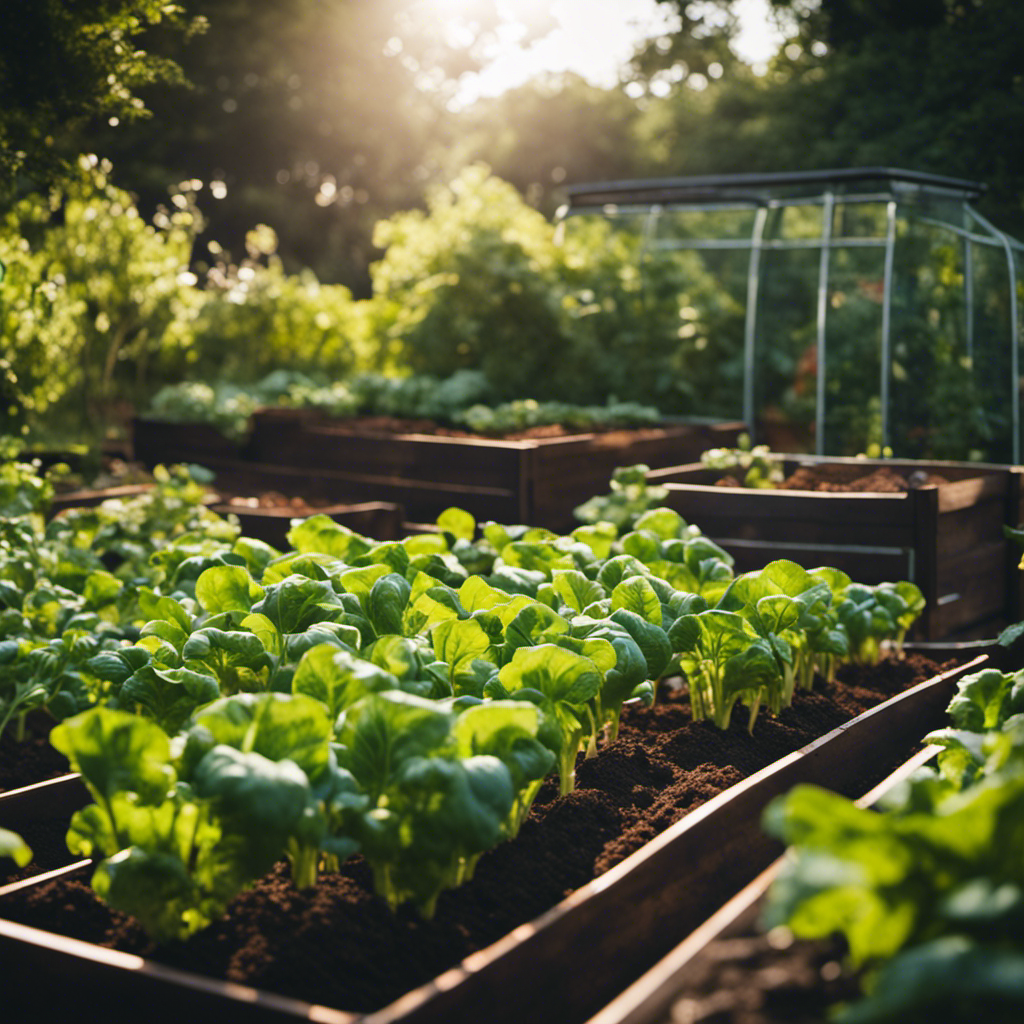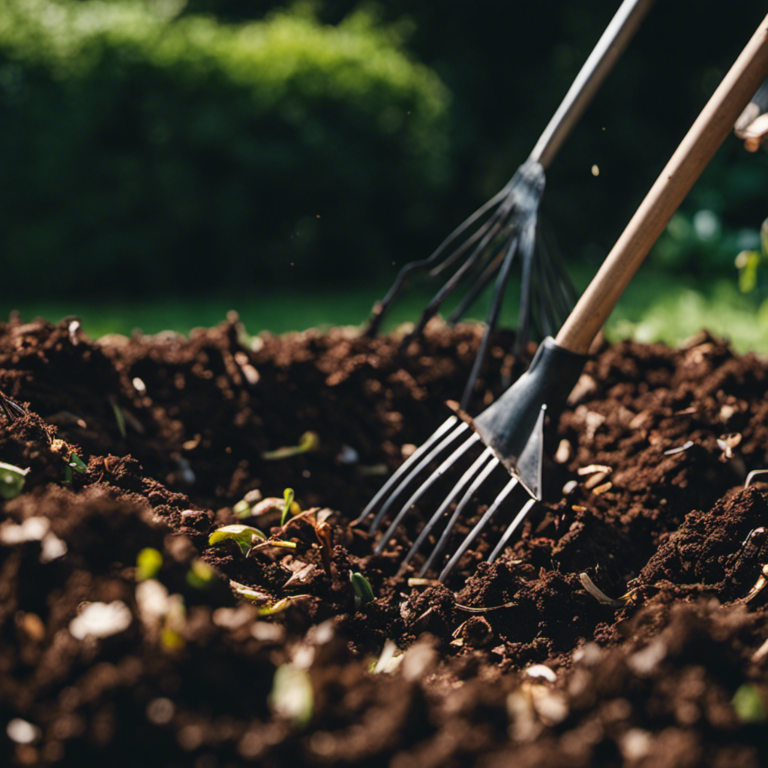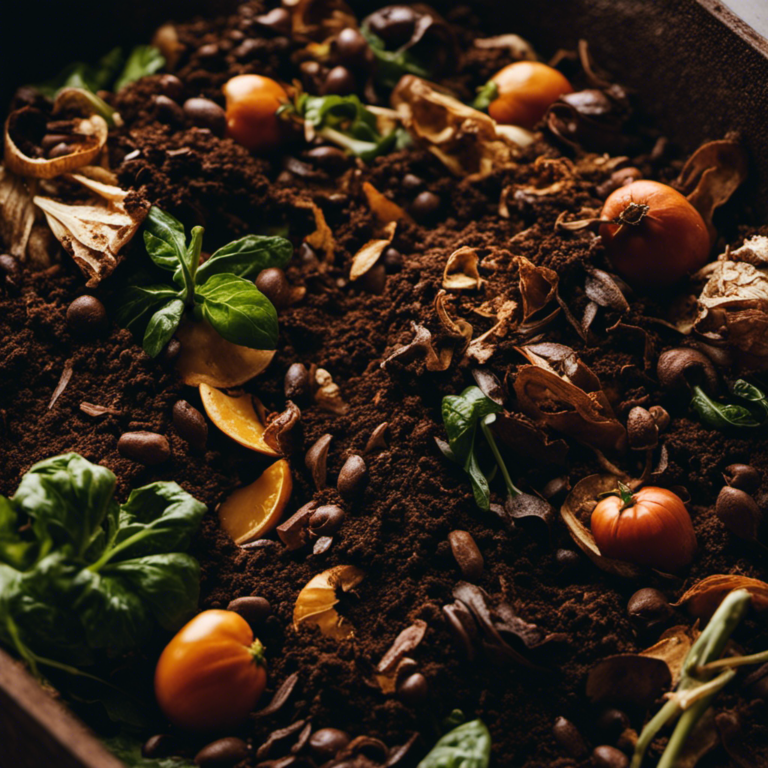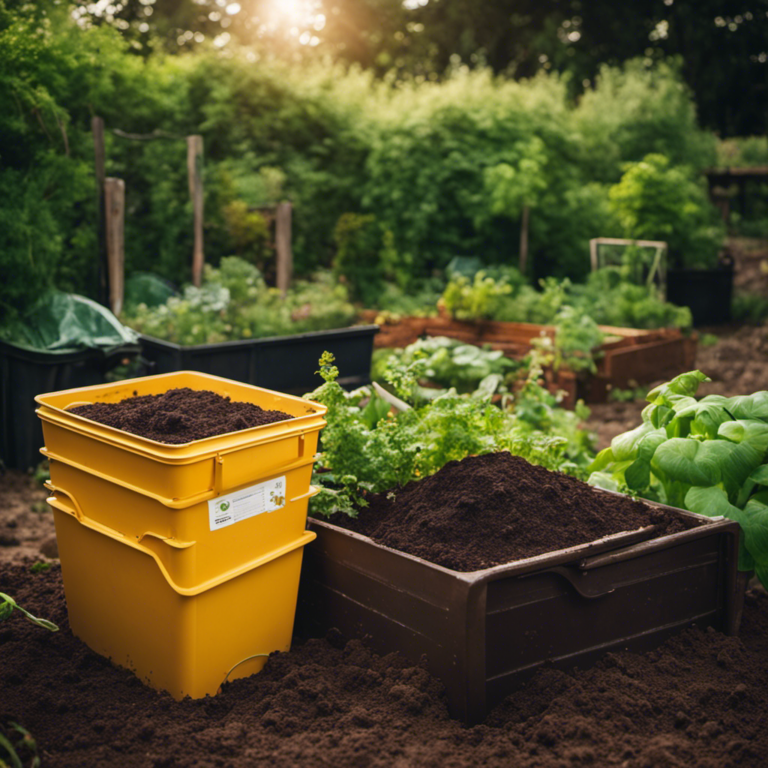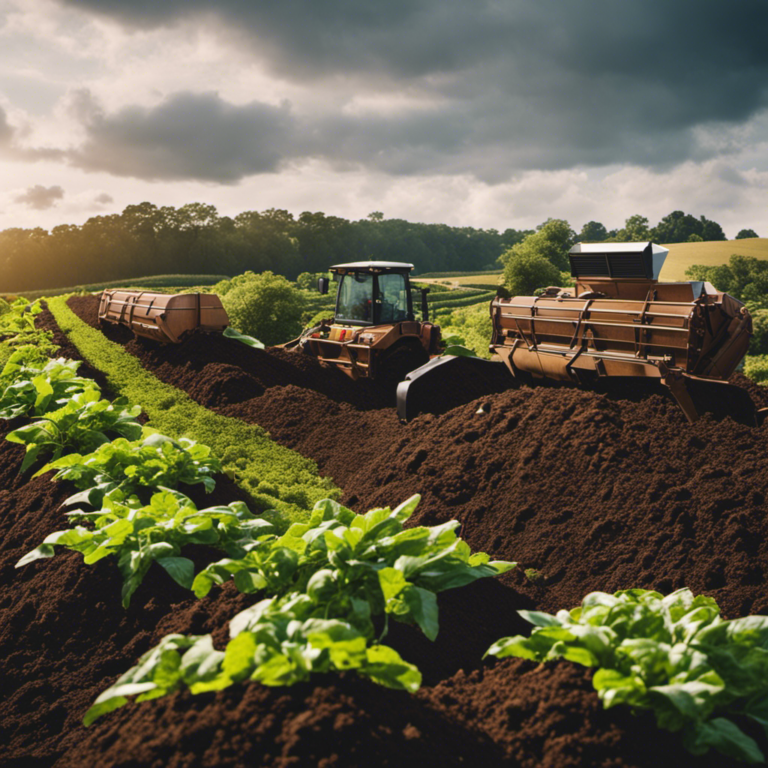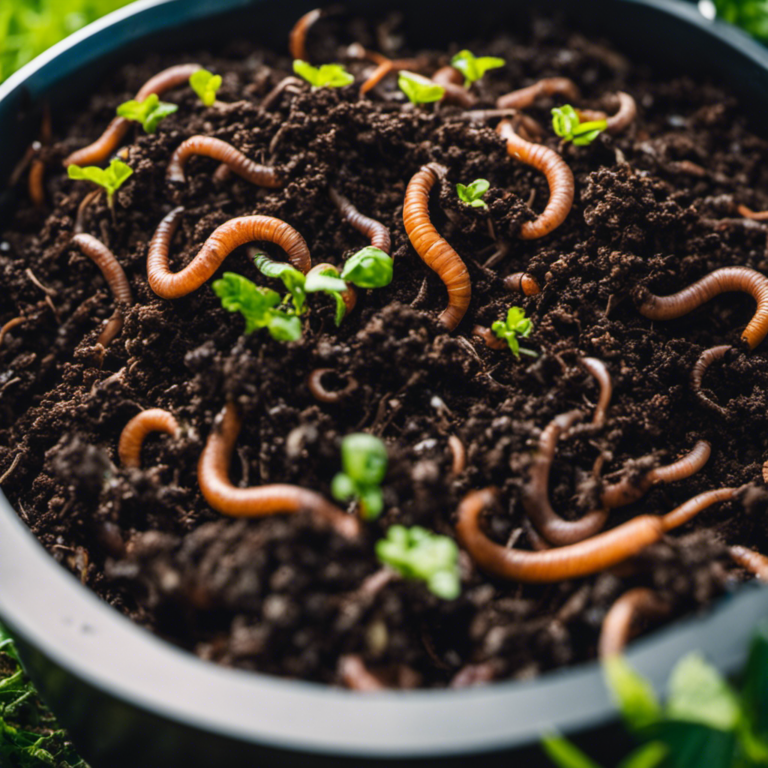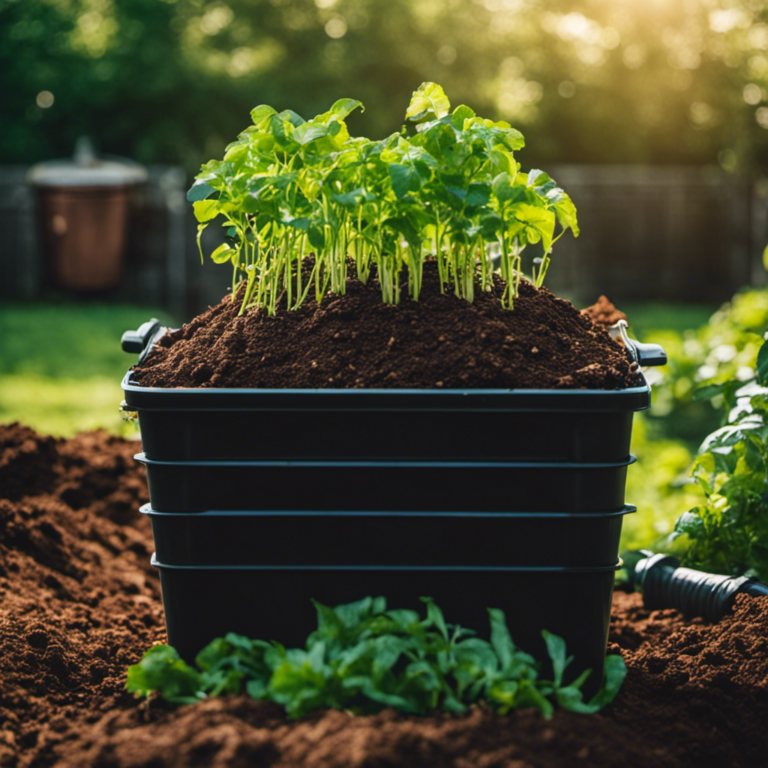I have discovered an innovative method to transform vegetable gardens using highly efficient composting systems. By implementing these techniques, you can greatly improve your garden’s productivity and sustainability.
In this article, I will guide you through different types of composting systems, explain the numerous benefits they offer, and provide essential components for optimal results.
With my step-by-step instructions and troubleshooting tips, you will be able to create and maintain a composting system that serves your garden and the environment.
Get ready to elevate your vegetable garden to the next level!
Key Takeaways
Revolutionizing Vegetable Gardens With Efficient Composting Systems
Composting systems can have a transformative effect on vegetable gardens, turning them into thriving paradises. By harnessing the natural recycling process of nature, these systems change the way we cultivate our own food.
With the right components and techniques, we can create a nutrient-rich mix that nourishes our plants, allowing them to flourish like never before.
So, let’s embrace the power of composting and see our gardens bloom with vitality and abundance.
Types of Composting Systems
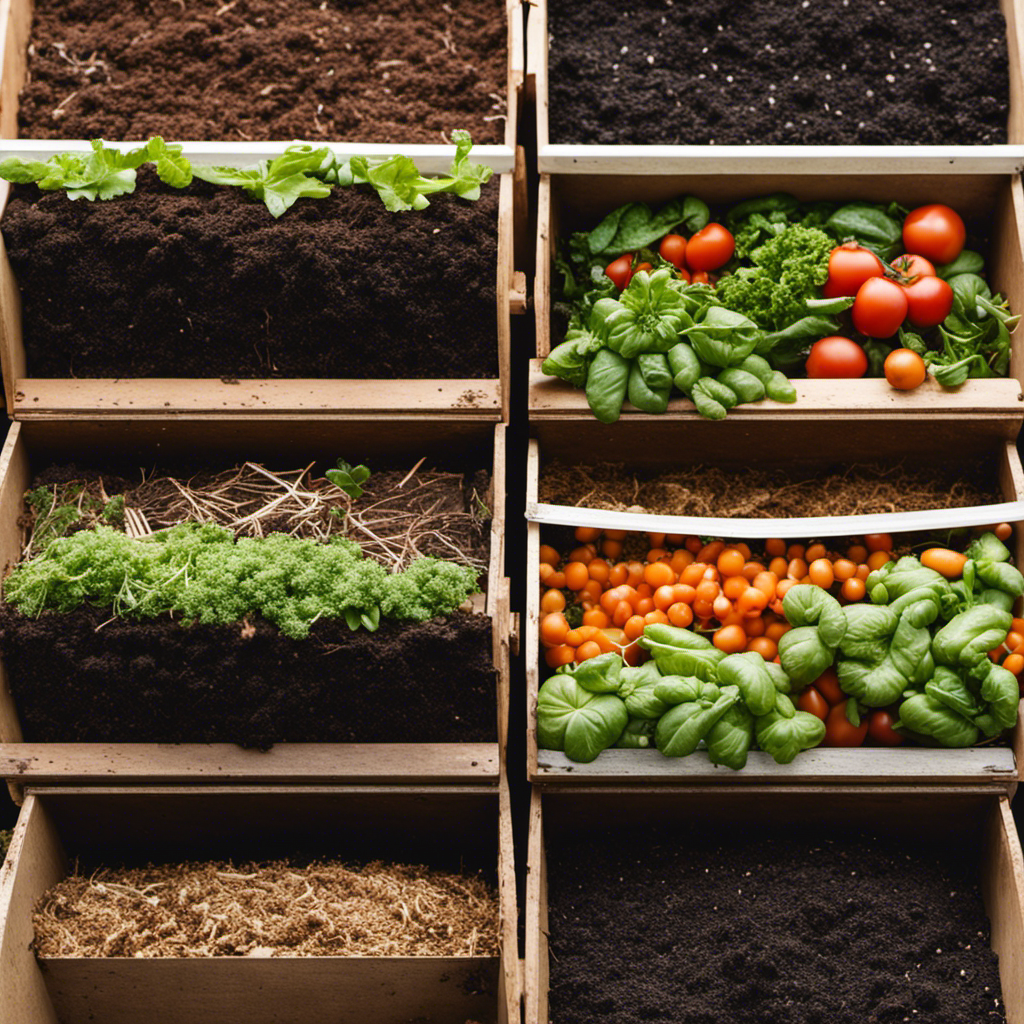
Types of Composting Systems
I find that using a three-bin composting system is the most efficient way to decompose organic waste in my vegetable garden. There are different composting methods available, but the three-bin system has proven to be effective for me. This system consists of three compartments, each with a specific purpose in the composting process.
The first bin is where I put fresh organic waste like kitchen scraps and yard trimmings. This bin is crucial for starting the decomposition process. Once it’s full, I transfer the partially decomposed material to the second bin. Here, the decomposition continues as the waste breaks down further. The third bin is where I obtain the finished compost.
In order to aid in the decomposition, it’s important to use composting equipment like pitchforks or compost turners. These tools help mix the waste, ensuring proper airflow and moisture distribution. With the three-bin system, I can have a continuous cycle of composting. While new waste is added to the first bin, the material in the second bin decomposes, and the compost in the third bin is ready to be used.
Benefits of Using Composting Techniques

Using composting techniques in vegetable gardens offers a wide range of benefits that can enhance the efficiency and sustainability of the gardening process.
One significant advantage of composting in urban areas is its ability to reduce waste. By converting kitchen scraps and yard trimmings into nutrient-rich compost, composting helps divert organic waste from landfills, reducing the overall waste burden on these already overcrowded sites.
Furthermore, composting in urban areas can greatly improve soil quality. Urban soils often lack essential nutrients due to the absence of natural organic matter. By incorporating compost into the soil, gardeners can replenish these nutrients and create a healthier environment for plants to thrive.
Another crucial benefit of composting is its role in reducing the reliance on chemical fertilizers. Compost releases nutrients slowly over time, providing a sustainable and balanced source of nourishment for plants. This not only decreases the environmental impact of chemical fertilizers but also fosters healthier plant growth while minimizing the risk of nutrient runoff into nearby water sources.
Essential Components for Efficient Composting
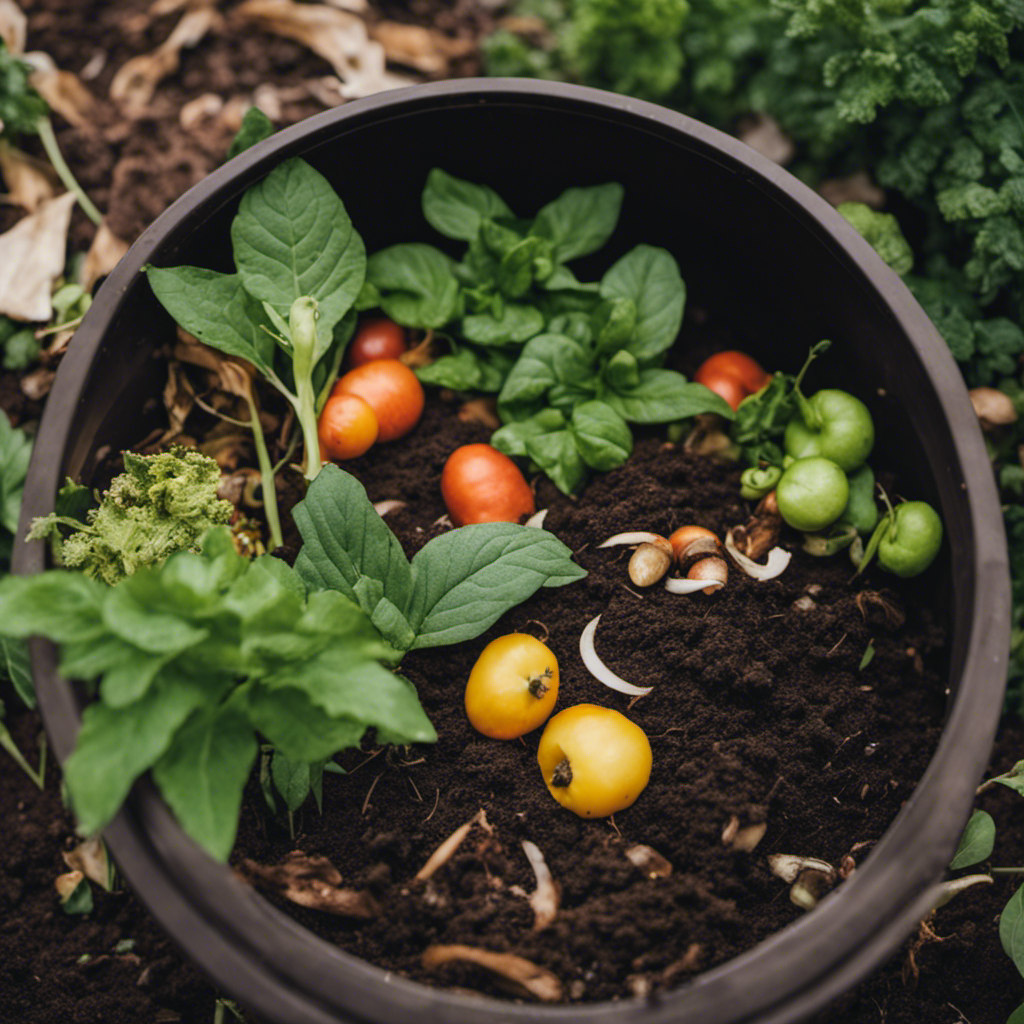
Creating an efficient composting system in vegetable gardens requires incorporating essential components. These components are designed to facilitate the composting process and ensure optimal results. Here are three components that are necessary for efficient composting:
-
Composting Equipment: To effectively compost, it’s important to have the right tools. This includes a compost bin or pile, which provides a contained space for organic materials to decompose. Other equipment such as a pitchfork or compost thermometer can help monitor and turn the compost, ensuring proper aeration and temperature regulation.
-
Organic Materials: The composting process relies on a balanced mix of organic materials. This includes green materials like grass clippings and kitchen scraps, which are rich in nitrogen, as well as brown materials like leaves and straw, which provide carbon. Achieving the right balance of these materials is necessary to create the ideal conditions for decomposition.
-
Water and Air: Adequate moisture and oxygen are essential for composting. It’s important to keep the compost pile damp, but not overly wet, to promote decomposition. Regularly turning the compost helps introduce oxygen, which aids in the breakdown of organic matter.
Step-by-Step Guide to Implementing a Composting System
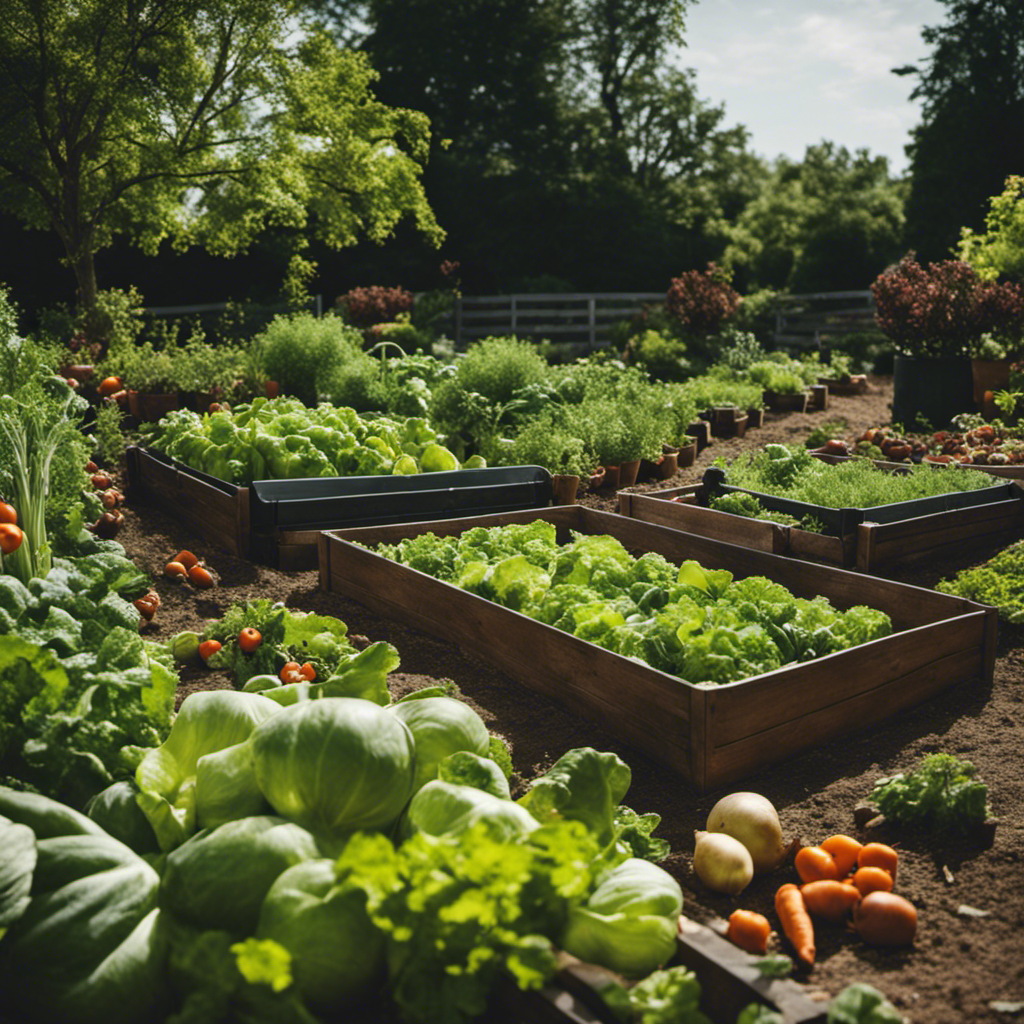
Implementing a Composting System: A Step-by-Step Guide
To set up a composting system in your vegetable garden, you’ll need to gather the necessary materials and create a designated space for composting. Let’s walk through the process together.
- Choose the Right Composting Bins
Select composting bins that are sturdy, well-ventilated, and have a lid to control odor and pests. Make sure they’re large enough to accommodate the amount of organic waste your garden produces, without being overwhelming to manage.
- Find a Suitable Location
Identify a convenient location for your composting system, preferably near your garden and exposed to a good amount of sunlight. This will facilitate the decomposition process.
- Start the Composting Process
Now that you have your bins and location ready, it’s time to begin composting. Start by layering your organic waste materials in the bin. Alternate between green materials, such as kitchen scraps and grass clippings, and brown materials, like dried leaves and twigs. Ensure that each layer is moist but not overly wet.
- Regularly Turn the Materials
To promote aeration and aid decomposition, regularly turn the materials in your compost bins. This will help the organic waste break down more efficiently.
- Reap the Benefits
Over time, the organic waste will transform into nutrient-rich compost. Once the compost has reached a dark, crumbly texture, it’s ready to be used to enrich your vegetable garden soil.
Implementing a composting system in your vegetable garden isn’t only environmentally friendly but also beneficial for your plants. By following these steps, you can create a sustainable cycle of waste reduction and nutrient recycling.
Happy composting!
Tips for Maintaining and Troubleshooting Composting Systems

Maintaining and troubleshooting composting systems in vegetable gardens requires regular inspection and prompt problem-solving. To help you keep your composting system running smoothly and address any issues that may arise, here are some practical maintenance strategies and common composting problems to be aware of:
-
Regularly turning the compost: By turning the compost every 2-3 weeks, you promote proper aeration, which is essential for the breakdown of organic materials. This regular turning helps maintain a healthy decomposition process.
-
Balancing the carbon-to-nitrogen ratio: The ideal carbon-to-nitrogen ratio in a compost pile is approximately 30:1. If your compost isn’t decomposing efficiently, it may be due to an imbalance in this ratio. Adjust the ratio by adding more carbon-rich materials such as dry leaves or straw, or nitrogen-rich materials like green plant trimmings or kitchen scraps.
-
Managing moisture levels: Adequate moisture is crucial for successful composting. If your compost becomes too dry, the decomposition process slows down. On the other hand, if it becomes too wet, it may emit odors or attract pests. Aim for a moisture level similar to that of a damp sponge.
Common composting issues and their solutions:
-
Foul odor: A lack of oxygen in the compost pile can cause unpleasant odors. Increase aeration by turning the pile and add more dry carbon-rich materials to absorb excess moisture.
-
Pest infestation: If you notice pests like flies or rodents in your compost, it may be because food scraps or animal waste aren’t buried or covered properly in the pile. Ensure that all food scraps are buried under a layer of carbon-rich materials.
-
Slow decomposition: If your compost takes longer than usual to decompose, it might be due to a lack of nitrogen-rich materials or insufficient aeration. Adjust the carbon-to-nitrogen ratio and increase the frequency of turning the pile to accelerate the process.
Conclusion
Composting systems can have a transformative effect on vegetable gardens, turning them into thriving paradises. By harnessing the natural recycling process of nature, these systems revolutionize the way we cultivate our own food.
With the right components and techniques, we can create a rich nutrient mix that nourishes our plants, allowing them to flourish like never before.
So, let’s embrace the power of composting and witness our gardens bloom with vitality and abundance.
